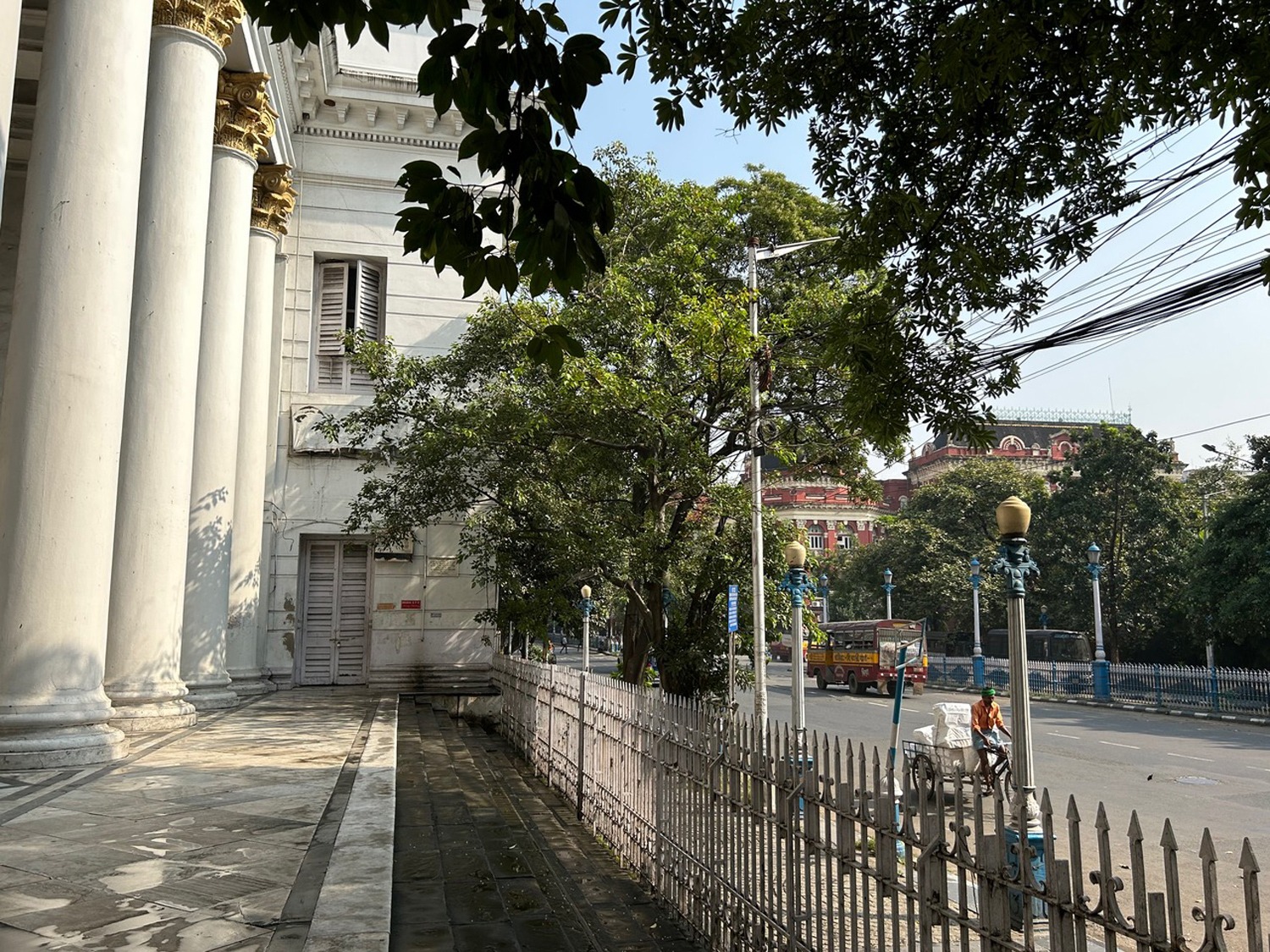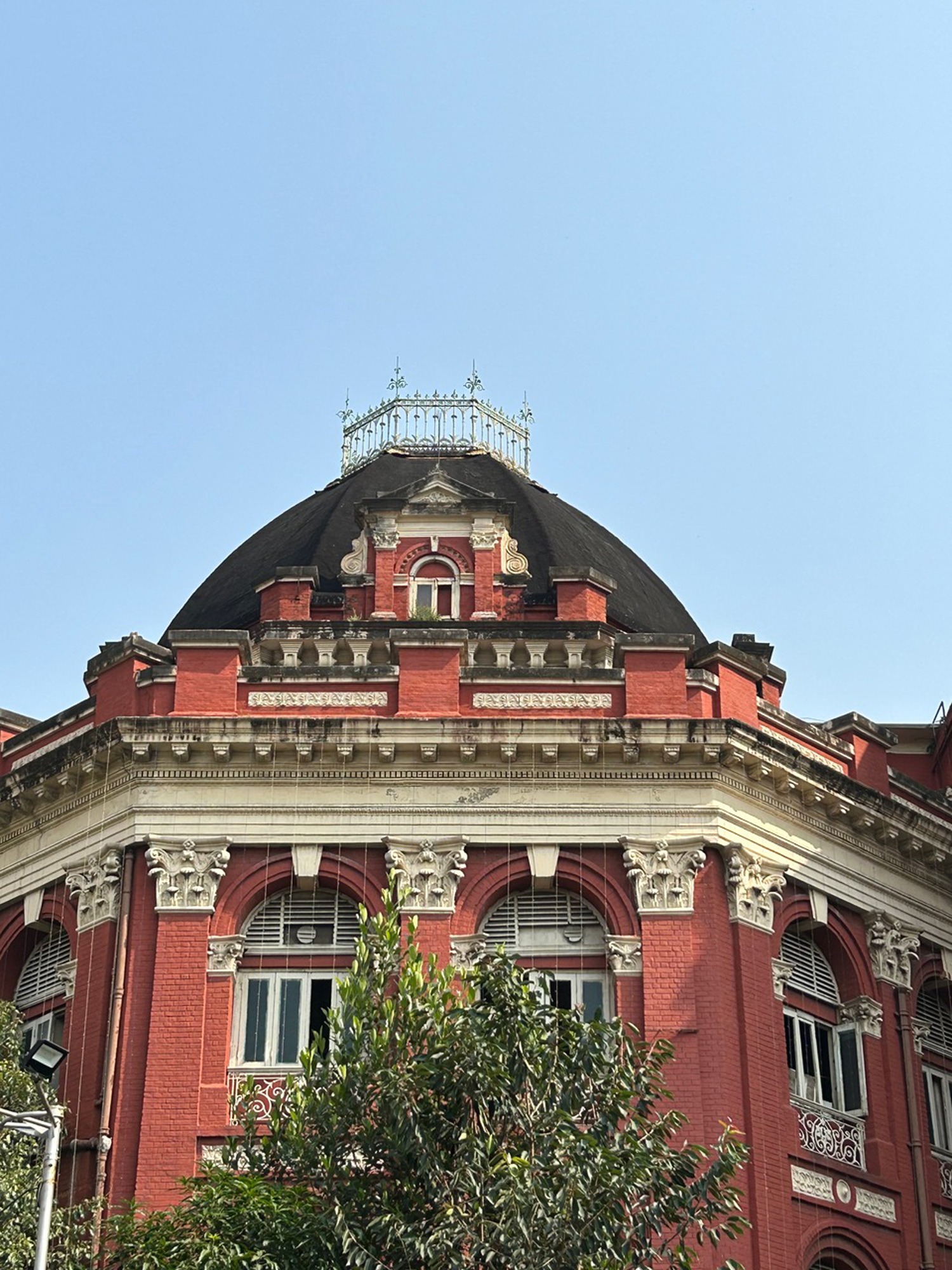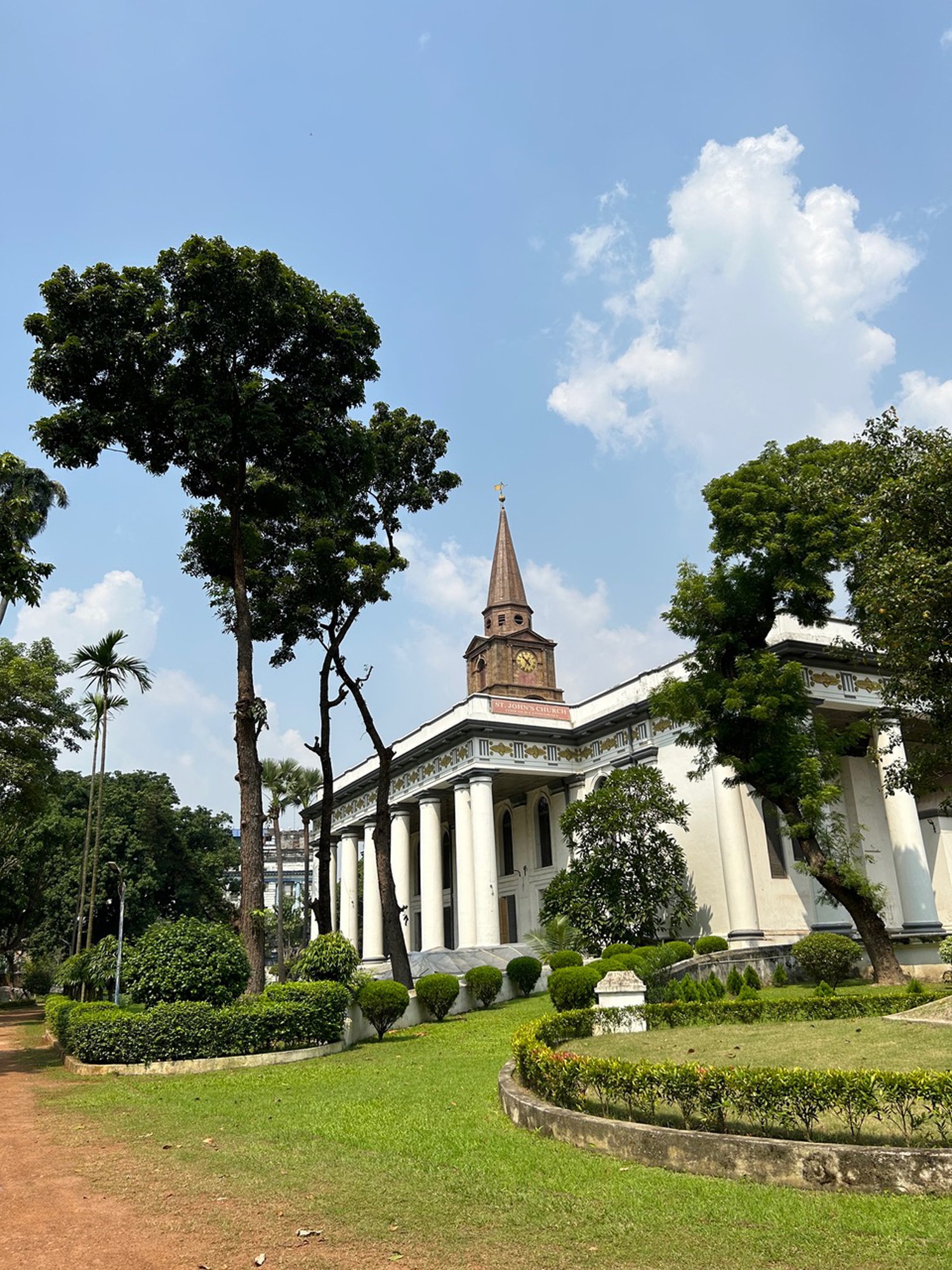14 May India Heritage Walk : A Reflection
“We set out at 8: 30 in the morning from the General Post Office Building after the tour guide shared with us a brief historical background regarding the sites we would be visiting. ”
In the beginning….the founding of Kolkata
I learned that the area around present-day Kolkata has a history dating back to ancient times and that it was originally inhabited by indigenous tribes. The Maurya and Gupta empires had influence in this region during ancient India, then Bengal, including the area that is now Kolkata, came under the control of various Muslim dynasties. In the 16th century, the Mughal Emperor Akbar conquered Bengal, bringing it under the control of the Mughal Empire.
The city of Hooghly, located nearby, became a significant trading port. In 1690, the British East India Company, under the leadership of Job Charnock, established a trading post on the banks of the Hooghly River. This is considered the founding of modern Kolkata. It grew in importance and eventually became the capital of British India. By the late 18th century, Calcutta had become the center of British operations in India. It was the capital of British India from 1772 until 1911 when the capital was shifted to Delhi.
Discovering our city on the heritage walk!
We continued our walk around the GPO and the architectural style was truly magnificent. The General Post Office in Kolkata was established during British colonial rule. It was built in the early 1860s and officially inaugurated on July 1, 1868. The GPO is an architectural masterpiece designed by Walter B. Grenville, an English architect. It showcases a blend of Italian Renaissance and Indo-Saracenic architectural styles. I had never taken the time to observe the interesting architecture and design of the building but spending time in front of the building up close was very memorable.
 The General Post Office (GPO) was the site of the old Fort William
The General Post Office (GPO) was the site of the old Fort William
Next, we saw the site of the Black Hole incident. The Black Hole incident is a tragic event associated with the history of British colonial rule in India. It took place in Kolkata in 1756. At the time, Bengal was under the rule of Siraj-ud-Daula, the Nawab of Bengal. Relations between the British East India Company and the Nawab had deteriorated due to various political and economic issues. In June 1756, Nawab Siraj-ud-Daula laid siege to Calcutta, capturing the city after a short but intense battle. Many British inhabitants, including soldiers and civilians, sought refuge in Fort William, a British fortification. On the night of June 20, 1756, Nawab’s forces overwhelmed Fort William. After the surrender, the captives were taken prisoner and locked in a small, underground cell within the fort. This room, later known as the “Black Hole,” was a small, poorly ventilated chamber designed to hold only a few people. The cell was overcrowded with over 140 prisoners, leading to extreme discomfort and suffocating conditions. Overnight, many of the captives died due to the lack of air and extreme heat. The exact number of casualties remains a subject of historical debate.
The Black Hole of Calcutta incident, Lal Dighi, Writers Building
The Black Hole incident remains a subject of historical debate. Some accounts suggest that the Nawab’s forces may not have intended for such a tragic outcome and that the number of casualties might have been exaggerated. Nevertheless, the incident had a profound impact on British perceptions of the Nawab’s rule. Being able to see the site of such a controversial incident in the flesh was greatly interesting but the area was not well- maintained so we quickly moved past.
Next, we saw the Lal Dighi. Lal Dighi was originally a large pond that existed before the city of Kolkata was founded. It is believed to have been dug during the Mughal period, potentially during the reign of Emperor Aurangzeb in the late 17th century. The name “Lal Dighi” translates to “Red Tank” in English. The origin of the name is uncertain, but it is speculated to refer to the reddish hue of the water, possibly due to the red soil in the region.
Over the years, Lal Dighi has witnessed numerous historic events, political gatherings, and public meetings. It has been a site for protests, rallies, and celebrations.
Lal Dighi is not only historically significant but also serves as an iconic landmark in Kolkata. It has been depicted in literature, art, and photographs, contributing to its cultural importance. The area was beautiful with trees and benches and the overall atmosphere was calm. I really enjoyed this particular site.
Then, we walked past The Writers’ Building, which was initially constructed in 1777 as the official residence for junior clerks of the British East India Company. The original structure was a nondescript two-storied building but over the years, the building underwent several expansions and renovations. The most significant transformation occurred in the early 19th century when Lord Wellesley, then Governor-General of India, initiated extensive modifications to create a more imposing structure.
 The red brick Writers Building, now the seat of power, was built to accommodate writers or clerks
The red brick Writers Building, now the seat of power, was built to accommodate writers or clerks
I was fascinated by the observation that there were four distinct clusters of statues representing justice, commerce, science and agriculture. Each cluster is represented by the respective Greek Gods and Goddesses of these four streams (Zeus for justice, Hermes for commerce, Athena for science and Demeter for agriculture) and I found this to be quite interesting.
Historical churches, Edwardian style architecture in the heart of Kolkata
After that we visited St. Andrew’s Church, which was founded in 1815 to serve the Scottish community in Kolkata. It was established by Scottish expatriates who were living and working in the city, primarily in administrative, military, and commercial roles. The tour guide told us about a rather amusing story behind its construction and explained why a weather vane is placed on the top of the church.
Soon, we arrived at the Currency Building, which has a beautiful interior. The Currency Building was constructed in the early 20th century, completed in 1937 and designed by noted architect Walter B. Grenville in the Indo-Saracenic architectural style.
The building originally served as the currency office of the Government of Bengal. It housed various departments related to the management and circulation of currency in the region. It played a vital role in the monetary operations of Bengal and was involved in the issuance and regulation of currency notes, as well as the storage and distribution of coins. The building is considered a fine example of Indo-Saracenic architecture, characterized by a fusion of Indian, Islamic, and British architectural elements. It features intricate detailing, arches, and domes typical of this style, although sadly some of these structures have worn down and are currently broken. Despite these damages, the place is still an architectural wonder and I did not miss the opportunity to click several photographs given the nice lighting.
Later on, we visited the Standard Life Assurance Company building. It was constructed in the early 20th century, completed in 1905. The building is an excellent example of the Edwardian architectural style, which was prevalent during the early 20th century. It features elements of Neo-Classical design, characterized by symmetrical facades, columns, and ornate detailing. I loved this particular destination because once again the architectural design and complexities were really spectacular.
Then, we made our way to the Raj Bhavan. Raj Bhavan was constructed between 1799 and 1803, during the tenure of Marquess Wellesley, who was the Governor-General of India. It was designed by Captain Charles Wyatt of the Bengal Engineers in the Neoclassical style. It was initially built as the official residence for the Governor-General of India. The building was intended to serve as a symbol of British imperial authority in the region. Over the years, as the capital of British India shifted to Delhi in 1911, Raj Bhavan continued to serve as the residence for the Governors of Bengal and, after independence, the Governors of West Bengal.
Finally, we went to St John’s Church. St John’s Church was absolutely beautiful and I learned that locals call it ‘Pathure Girja’ or the Stone Church since it was one of the few buildings built in stone in those days. The church includes a painting of the ‘Last Supper’ by German Painter Johann Zoffany that resembles that of Leonardo da Vinci’s but has an Indian touch which was really interesting. We sat inside the church for a while as we took in the peaceful atmosphere as the organ played a melodious tune. The mosaic windows and various sculptures were all wonderful to see. We also saw the Lady Canning Memorial, Job Charnock’s Mausoleum as well as the Black Hole Memorial which were all fascinating structures.
 St Johns Church, one of Kolkata’s oldest, is where Job Charnock is buried
St Johns Church, one of Kolkata’s oldest, is where Job Charnock is buried
The tour was not only educational but also a fun and interesting way to learn more about the heritage of the city in which I am living in. I really enjoyed this experience and I gained a lot of knowledge regarding my city which I hope I can use for school projects as well as share with my friends and family!
